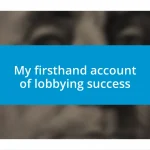Key takeaways:
- Lobbyist transparency laws empower citizens by requiring disclosure of lobbying activities, funding sources, and client relationships, fostering informed engagement.
- Transparency enhances accountability and trust between lawmakers and constituents, leading to more ethical governance.
- Successful case studies, like California’s and New York’s initiatives, highlight the positive effects of transparency on public engagement and trust.
- The future of lobbyist transparency may leverage technology for improved access to data, promoting standardized regulations across states.

Understanding lobbyist transparency laws
Lobbyist transparency laws are designed to shed light on the often murky world of lobbying. From my perspective, it’s shocking how much influence lobbyists can wield behind the scenes — often influencing legislation without any accountability. Can you imagine how different our political landscape might be if we could easily track who’s funding what?
These laws require lobbyists to disclose their activities, allowing the public to see who is advocating for specific interests. When I first learned about these disclosures, I felt a mix of frustration and empowerment. It’s empowering to know that there are measures in place to hold these powerful figures accountable, but frustrating to realize how much we need them to safeguard our democratic processes.
Understanding these laws also means recognizing the importance of public access to lobbyist information. I often wonder how many citizens are aware of their existence or even take the time to read these disclosures. If more people engaged with this data, perhaps we could foster a more informed electorate that challenges the status quo, ultimately leading to more ethical governance.
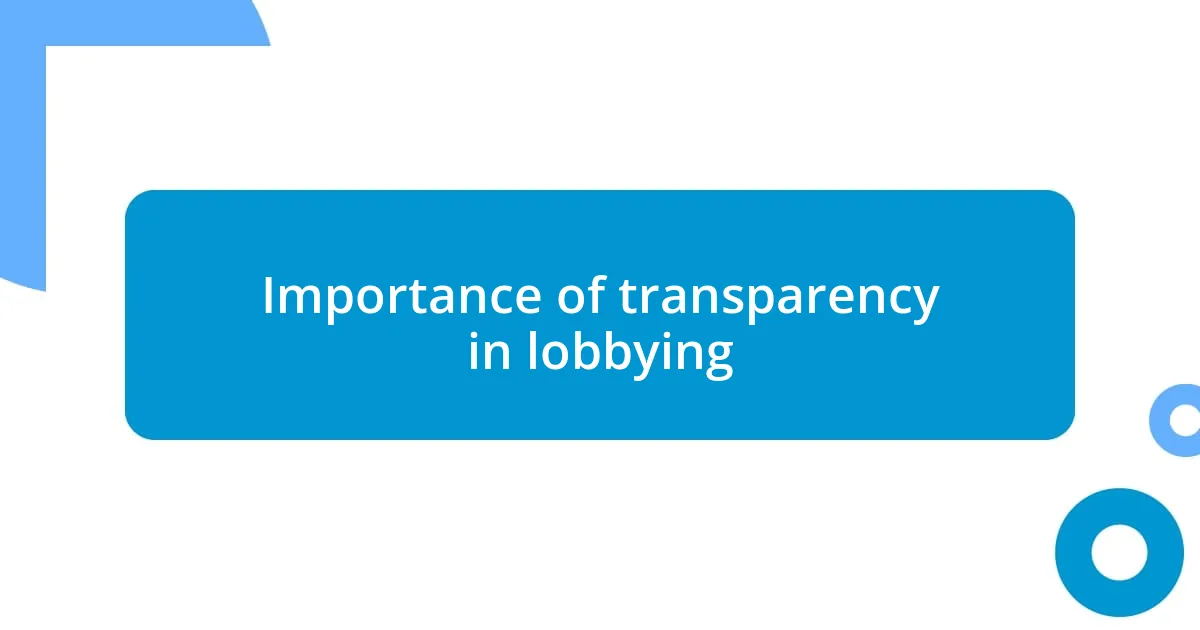
Importance of transparency in lobbying
The significance of transparency in lobbying cannot be overstated. I remember the first time I stumbled upon a lobbying disclosure report; it felt like uncovering a hidden layer of our democracy. By making this information public, citizens gain the power to identify who stands behind various initiatives and who is financially supporting specific agendas. This kind of visibility helps dispel the air of secrecy that often surrounds lobbying activities.
Moreover, transparent lobbying fosters trust between lawmakers and their constituents. I’ve witnessed instances where public awareness of lobbying efforts prompted discussion among community members, leading to more informed decisions during elections. It’s as if the fog is lifted; constituents can hold politicians accountable, knowing which interests may sway their actions.
Finally, transparency in lobbying can lead to ethical governance. Everyone deserves to know who’s influencing policy decisions. In one conversation with a friend, we talked about how the more we uncover about lobbying, the more we realize the importance of standing up for our beliefs. When lobbying activities are transparent, I believe we can better advocate for what truly matters in our communities, ensuring our government reflects the people’s interests.
| Benefit | Description |
|---|---|
| Empowerment | Informed citizens can engage more effectively with their government. |
| Accountability | Politicians are held answerable for their affiliations and decisions. |
| Trust | Transparency cultivates a trusting relationship between the electorate and elected officials. |
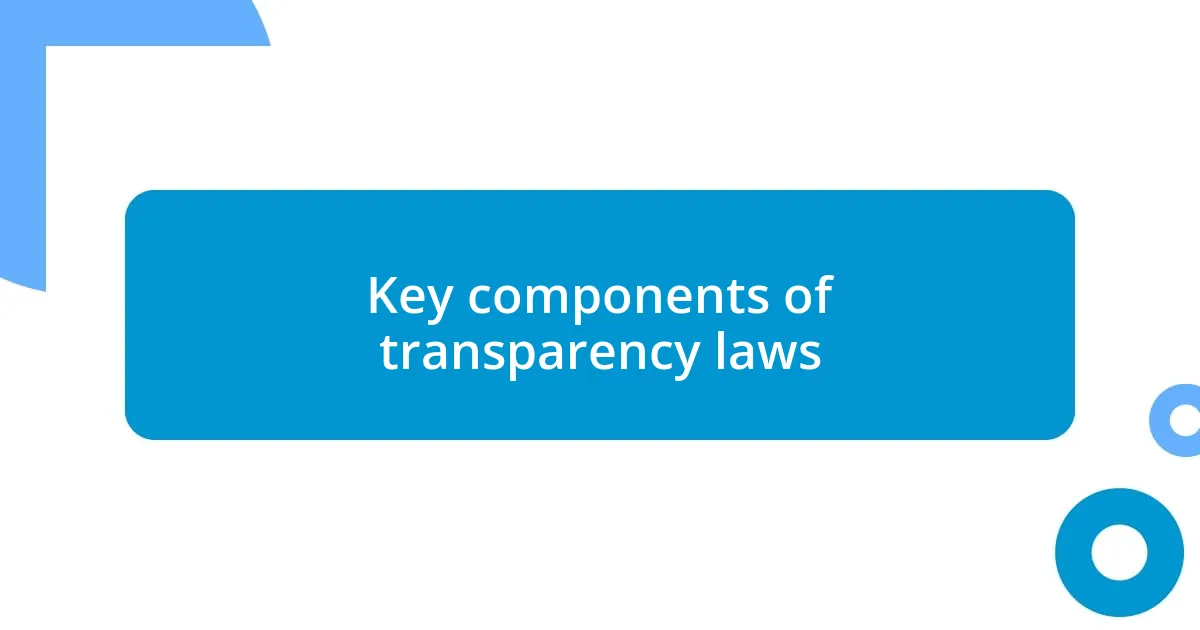
Key components of transparency laws
The key components of transparency laws provide a framework that enhances public understanding of lobbying activities. From my experience, I’ve noticed that clarity in these regulations can significantly impact how citizens perceive their government. When rules require lobbyists to disclose financial contributions, their client relationships, and lobbying objectives, it opens a window into what drives policy decisions. I remember reading a detailed report where a lobbyist’s funding sources were disclosed; it felt like uncovering a mystery, and I couldn’t help but think about the implications.
Here are the essential components that contribute to effective transparency laws:
- Disclosure of Funding Sources: Requiring lobbyists to reveal who is paying for their efforts helps the public see potential biases in lobbying actions.
- Activity Reporting: Mandating lobbyists to detail their interactions with lawmakers provides insight into the frequency and nature of these engagements.
- Client Transparency: Ensuring lobbyists disclose their clients helps the public identify which interests are being prioritized in the political arena.
When all these elements come together, they create a more open environment that fosters civic engagement and scrutiny. It isn’t just about rules; it’s about empowering everyday citizens like you and me to ask deeper questions about the motivations behind legislation.
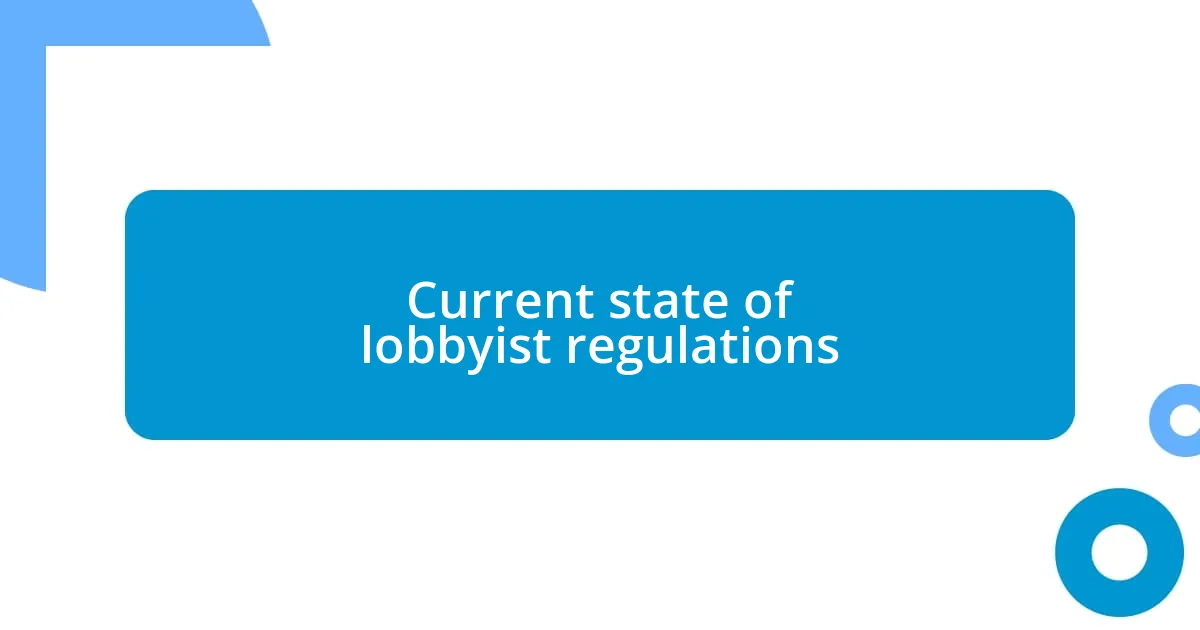
Current state of lobbyist regulations
Lobbyist regulations today are a tangled web, varying significantly by state and even at the federal level. Some states have robust laws that require detailed disclosures, while others offer a more lenient approach, leaving citizens in the dark. I often wonder how it’s possible for such disparities to exist; shouldn’t we all be on the same page when it comes to transparency?
At the federal level, the Lobbying Disclosure Act mandates that lobbyists register and file regular reports. However, I’ve noticed that compliance can be spotty, with many lobbyists exploiting loopholes to avoid full transparency. I can’t help but think of the times I’ve encountered lobbying reports that seemed more like puzzles than straightforward documents. Isn’t it ironic that in a democracy, we often find ourselves guessing at the motivations behind laws and policies?
In my experience, public attention has shifted towards greater accountability in lobbying, and I see a gradual push for stricter regulations. This shift encourages conversations in my community about lobbying practices. The question arises: Are we ready to demand a more transparent system? I believe we are, and as more people engage in these discussions, the momentum for change will only grow.

Challenges in implementing transparency
Implementing transparency laws faces significant hurdles, primarily because of the complexities involved in tracking lobbying activities. I’ve seen firsthand how varied definitions of “lobbying” can create confusion. For instance, what constitutes lobbying for one organization might not be the same for another, complicating the enforcement of consistent transparency.
One challenge that stands out to me is the resistance from both lobbyists and some lawmakers who worry about the repercussions of full disclosure. I remember attending a community meeting where a local lobbyist spoke nervously about the potential fallout from revealing funding sources. It made me think: are we compromising the quality of representation for the sake of clarity?
Additionally, the lack of standardized reporting formats can lead to inconsistent interpretations of the data presented. I’ll never forget sifting through disparate reports that seemed to provide more obfuscation than clarity. How can we expect the public to engage with this information if it’s not presented in a straightforward way? Until we tackle these inconsistencies, achieving true transparency will remain an uphill battle.
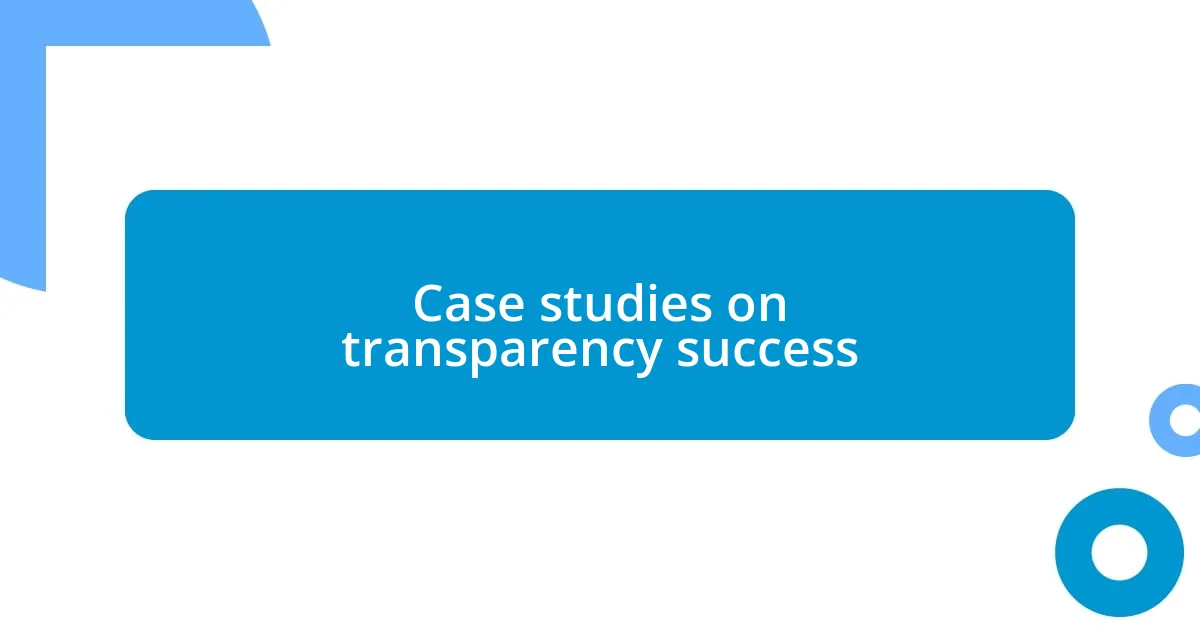
Case studies on transparency success
One notable case of transparency success comes from the state of California, where the California Transparency in Lobbying Act significantly improved public access to lobbying information. I remember attending a city council meeting shortly after these changes were implemented, and the difference was palpable; the public was better informed and engaged in the discussion. It made me wonder how many more states could benefit from similar reforms—wouldn’t it be great if all citizens felt empowered like that?
In contrast, North Carolina’s experience illustrates the powerful impact of transparency on public trust. After adopting stricter reporting requirements, I noticed an uptick in citizen involvement in local government meetings. People were showing up, armed with knowledge about who was lobbying for what. It was refreshing to see how transparency can breathe life into civic engagement and foster a sense of community ownership.
On the other hand, the City of New York launched an online lobbying database, which transformed the way residents interact with their government. I recall exploring the site, discovering unpredictable lobbying influences that I hadn’t previously considered. The ease of access to such information sparked discussions among my friends—questions flowed freely about who might be pulling the strings behind certain policies. Wouldn’t it be amazing if all cities could follow suit?
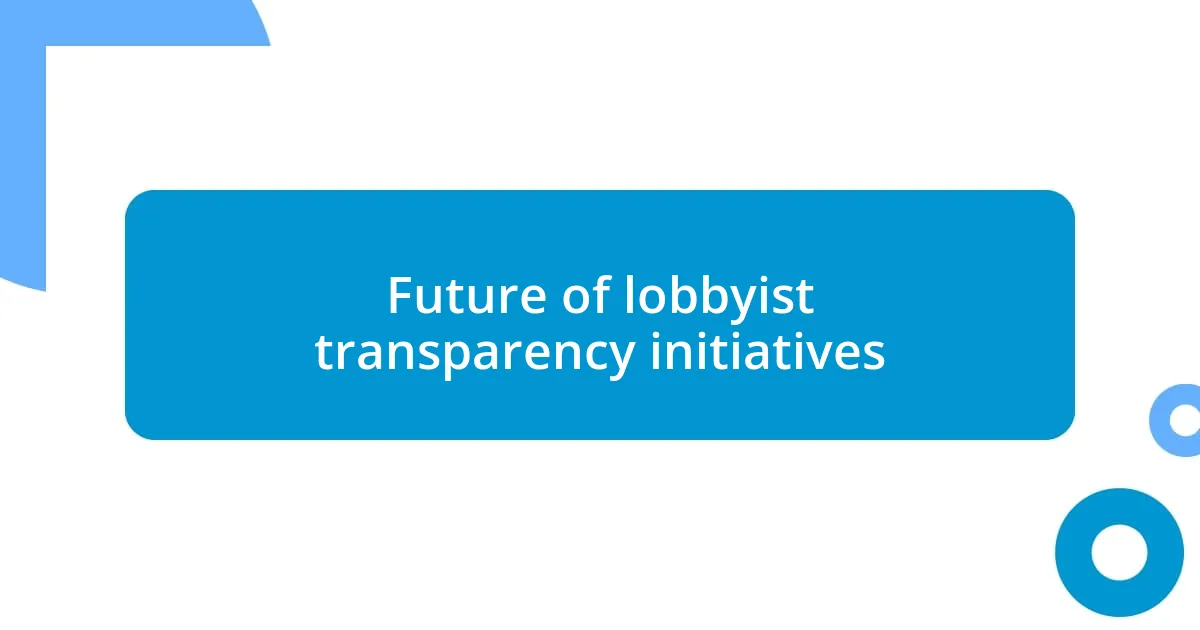
Future of lobbyist transparency initiatives
Looking ahead, I believe the future of lobbyist transparency initiatives hinges on technological advancements. In my experience, platforms that leverage artificial intelligence can streamline the process of collating and analyzing lobbying data. Imagine a world where citizens can easily access tailored reports on lobbying activities with just a click! It’s an exciting prospect that could significantly enhance public engagement.
As we move further into this digital age, I’ve noticed a growing demand for accountability from the public. People are more aware than ever of the potential influence of lobbyists on policymaking. I attended a recent forum that buzzed with conversations about how increased transparency could lead to stronger democracy. It made me think: if the public keeps pushing for answers, how can lawmakers ignore that call?
In addition, I foresee a trend toward collaboration among states and advocacy groups to harmonize disclosure laws. Drawing from my observations, when organizations unite to promote consistent regulations, their collective voice can drive meaningful change. Wouldn’t it be powerful to have a standardized approach that encourages trust and accountability across the board? The potential for such initiatives seems limitless as awareness and advocacy continue to grow.














